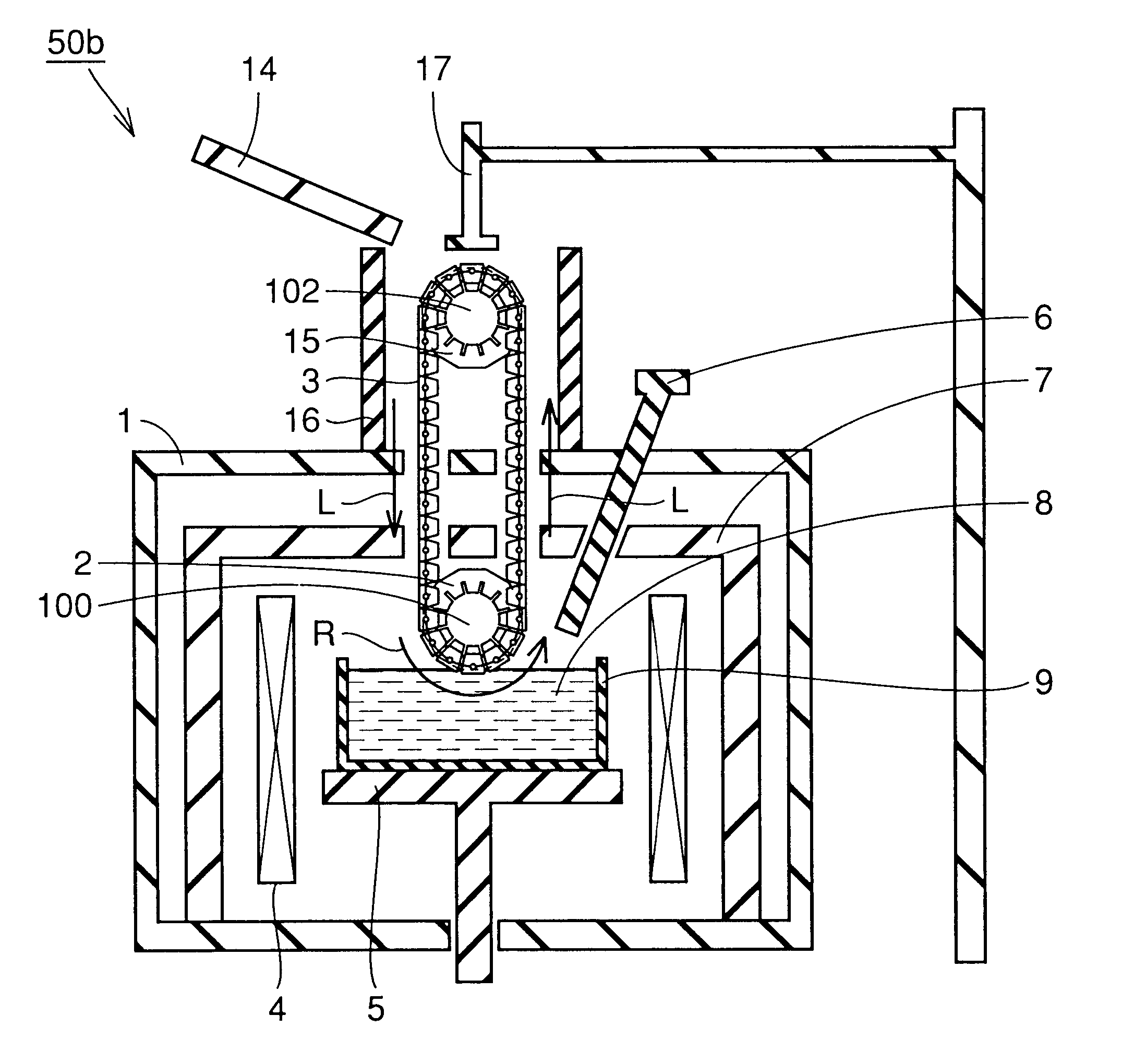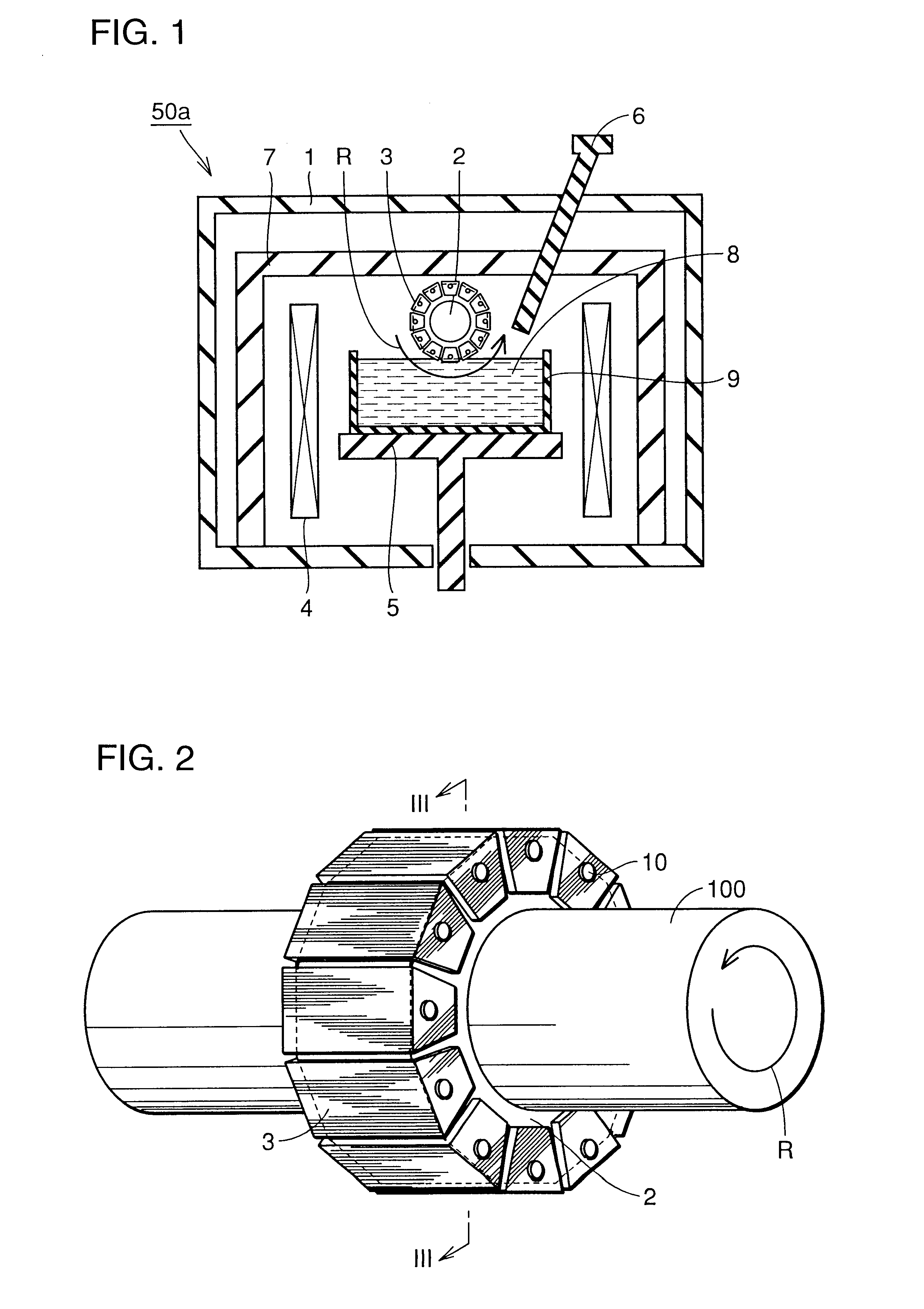Method of producing a crystal sheet, apparatus for use in producing the same, and solar cell
a technology of crystal sheets and apparatus, applied in the direction of crystal growth process, polycrystalline material growth, protective fluid, etc., can solve the problems of silicon inconvenient, cost-intensive steps, and loss of silicon source material
- Summary
- Abstract
- Description
- Claims
- Application Information
AI Technical Summary
Problems solved by technology
Method used
Image
Examples
sixth examples
THIRD TO SIXTH EXAMPLES
Third to sixth examples are provided in a manner similar to that as employed in the first embodiment, except that substrate 3 has an unleveled surface. More specifically, the third example employs the FIG. 20 substrate 3. The fourth example employs the FIG. 21 substrate. The fifth example employs the FIG. 22 substrate. The sixth example employs the FIG. 23 substrate. Each substrate has a recess of 1 mm in pitch and 1 mm in depth. In FIGS. 22 and 23, planar protrusion 3d is 5 mm wide. Each substrate 3 is employed to fabricate a solar cell, which exhibits characteristics, as shown in Table 1.
seventh example
Initially, a source material of silicon is prepared with boron having a concentration adjusted to provide a specific resistance of 2.OMEGA..multidot.cm. The source material of silicon is introduced into a crucible of quartz protected by a crucible of highly pure carbon. The crucible was fixed internal to main chamber 1 shown in FIG. 41. Main chamber 1 is vacuumed to no more than 6.7.times.10.sup.-1 Pa in pressure. Thereafter, the gaseous argon is introduced into main chamber 1 to provide atmospheric pressure. Thereafter, the gaseous argon is allowed to flow out constantly at 1 dm.sup.3 per minute from an upper portion of the chamber.
Then, to melt the silicon, heater 4 is set to 1550.degree. C. Thus, the silicon is completely melted. Since the source material of silicon has been melted and its liquid level is thus lowered, the source material of silicon is additionally introduced through a tube introducing additional source material to maintain the liquid level at a predetermined lev...
eighth example
In the present example a sheet of nickel is produced. A source material of nickel is introduced into crucible 9 of highly pure alumina which is fixed in a chamber of the FIG. 13 apparatus 50c for use in producing a crystal sheet. The chamber is set to have an internal pressure of no more than 6.7.times.10.sup.-2 Pa. Then, gaseous argon is introduced into the chamber to achieve atmospheric pressure. Thereafter, at a constant rate of 1 dm.sup.3 / min. the gaseous argon is allowed to flow out from an upper portion of the chamber
Then a heater for melting the nickel is set to have a temperature of 1560.degree. C. to completely melt the nickel. The source material of nickel melted has a lowered liquid level. Accordingly, the source material of nickel is additionally introduced through a tube for introducing additional source material to set the liquid level at a predetermined level. Then, melt 8 of nickel is maintained at 1470.degree. C. for 30 minutes to stabilize the temperature of melt ...
PUM
| Property | Measurement | Unit |
|---|---|---|
| thickness | aaaaa | aaaaa |
| melting point | aaaaa | aaaaa |
| melting point | aaaaa | aaaaa |
Abstract
Description
Claims
Application Information
 Login to View More
Login to View More - R&D
- Intellectual Property
- Life Sciences
- Materials
- Tech Scout
- Unparalleled Data Quality
- Higher Quality Content
- 60% Fewer Hallucinations
Browse by: Latest US Patents, China's latest patents, Technical Efficacy Thesaurus, Application Domain, Technology Topic, Popular Technical Reports.
© 2025 PatSnap. All rights reserved.Legal|Privacy policy|Modern Slavery Act Transparency Statement|Sitemap|About US| Contact US: help@patsnap.com



